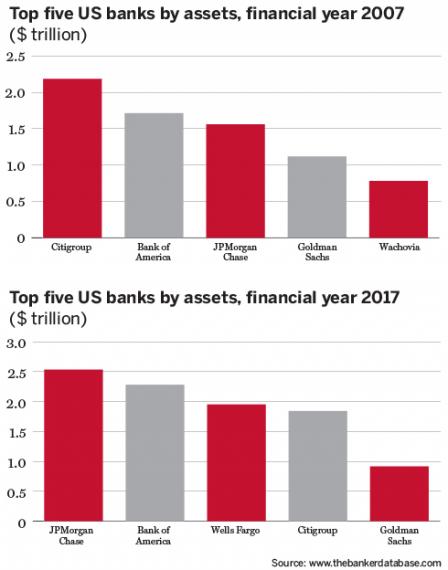Ten years on from the global financial crisis, what has changed in the US top five banks ranking? One bank disappeared, two experienced a drop in total assets and three boosted their balance sheets. Joy Macknight reports.
On September 15, 2008, the world woke to the news that Lehman Brothers had gone bust. The investment bank, which was the sixth largest bank in the US by total assets at the end of 2007, filed for Chapter 11 bankruptcy protection.
It remains the largest bankruptcy in history. Lehman’s held more than $600bn in assets, and has come to epitomise the global financial crisis. Its failure sparked numerous regulations, many of which are still in place, as well as unconventional monetary policy in the form of quantitative easing and negative interest rates.
Wachovia, the fifth largest US bank by total assets at the end of 2007, was the big loser in the crisis, being swallowed up by, at the time, seventh-placed Wells Fargo. The latter was the biggest winner, increasing its total assets by a whopping 239%, which put it in third place at the end of 2017, behind JPMorgan and Bank of America. The latter had agreed to buy the ailing Merrill Lynch the day before the Lehman announcement.
Over the past decade, Citigroup, which was the US’s largest bank at the end of 2007, has seen a 16% decrease in total assets, while Goldman Sachs’ assets have fallen by 18%.
All data sourced from www.thebankerdatabase.com



